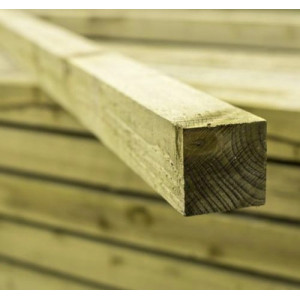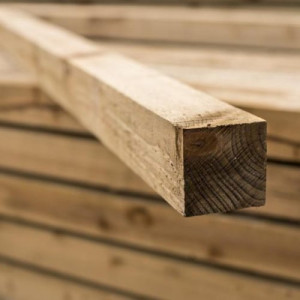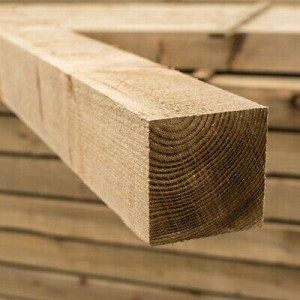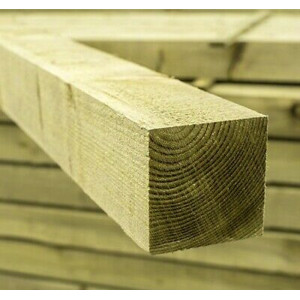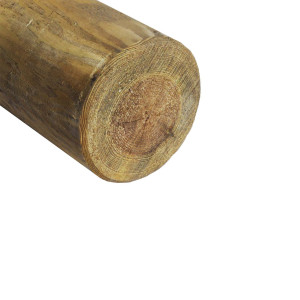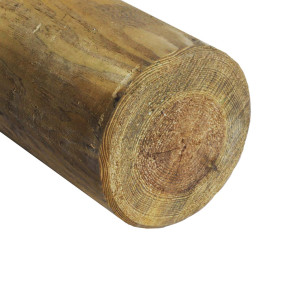Your Cart
x
Wooden Fence Posts
Discover our range of durable wooden fence posts, designed to meet all your gardening and landscaping needs. Whether you're looking to create a traditional fence boundary, add structural support to your garden, or bring a natural aesthetic to outdoor spaces, our wooden posts are versatile, sturdy, and ready to withstand the elements.
Crafted from high-quality timber, these posts ensure longevity and are available in a variety of sizes and finishes to complement any project. Ideal for both professional landscapers and DIY enthusiasts, our wooden fence posts provide the perfect foundation for a secure and attractive outdoor area.
Introducing our 8FT 3"x3" Wooden Fence Post (2.4M x 75x75MM), the ideal solution for all your fencing needs. Crafted with the finest timber produced in Ireland, these Wooden Fence Posts are designed to be both durable and aesthetically pleasing, serving as a natural-looking alternative to common con..
£10.95
Ex Tax:£9.13Introducing our 6FT 3"x3" Wooden Fence Post (1.8M x 75x75MM), the ideal solution for all your fencing needs. Crafted with the finest timber produced in Ireland, these Wooden Fence Posts are designed to be both durable and aesthetically pleasing, serving as a natural-looking alternative to common con..
£7.95
Ex Tax:£6.63Introducing our 6FT 4"x4" Wooden Fence Post (1.8M x 100x100MM) – the ideal solution for anyone looking to secure their garden, enhance privacy, or simply add a touch of rustic charm to their outdoor space. As a proud supplier of high-quality Wooden Fence Posts, we ensure that our products are not on..
£13.95
Ex Tax:£11.63Introducing our 10FT 4"x4" Wooden Fence Post (3.0M x 100x100MM) – the ideal solution for anyone looking to secure their garden, enhance privacy, or simply add a touch of rustic charm to their outdoor space. As a proud supplier of high-quality Wooden Fence Posts, we ensure that our products are not o..
£23.95
Ex Tax:£19.96Introducing our 6FT 3"x3" Wooden Fence Post (1.8M x 75x75MM), the ideal solution for all your fencing needs. Crafted with the finest timber produced in Ireland, these Wooden Fence Posts are designed to be both durable and aesthetically pleasing, serving as a natural-looking alternative to common con..
£7.95
Ex Tax:£6.63Introducing our 6FT 4"x4" Wooden Fence Post (1.8M x 100x100MM) – the ideal solution for anyone looking to secure their garden, enhance privacy, or simply add a touch of rustic charm to their outdoor space. As a proud supplier of high-quality Wooden Fence Posts, we ensure that our products are not on..
£13.95
Ex Tax:£11.63Introducing our 8FT 4"x4" Wooden Fence Post (2.4M x 100x100MM) – the ideal solution for anyone looking to secure their garden, enhance privacy, or simply add a touch of rustic charm to their outdoor space. As a proud supplier of high-quality Wooden Fence Posts, we ensure that our products are not on..
£18.95
Ex Tax:£15.79Introducing our 8FT 3"x3" Wooden Fence Post (2.4M x 75x75MM), the ideal solution for all your fencing needs. Crafted with the finest timber produced in Ireland, these Wooden Fence Posts are designed to be both durable and aesthetically pleasing, serving as a natural-looking alternative to common con..
£10.95
Ex Tax:£9.13Introducing the KD UC4 Treated 1800MM x 73MM x 73MM Machine Round Pointed Post – the ultimate choice for all your fencing needs. Whether you're looking to secure your garden, create agricultural fencing or set boundaries for your farm fields, this versatile, high-quality wooden post has got you cove..
£12.95
Ex Tax:£10.79Introducing our 10FT 3"x3" Wooden Fence Post (3.0M x 75x75MM), the ideal solution for all your fencing needs. Crafted with the finest timber produced in Ireland, these Wooden Fence Posts are designed to be both durable and aesthetically pleasing, serving as a natural-looking alternative to common co..
£12.95
Ex Tax:£10.79Introducing our 10FT 3"x3" Wooden Fence Post (3.0M x 75x75MM), the ideal solution for all your fencing needs. Crafted with the finest timber produced in Ireland, these Wooden Fence Posts are designed to be both durable and aesthetically pleasing, serving as a natural-looking alternative to common co..
£12.95
Ex Tax:£10.79Introducing the KD UC4 Treated 1800MM x 106MM x 106MM Machine Round Pointed Post – the ultimate choice for all your fencing needs. Whether you're looking to secure your garden, create agricultural fencing or set boundaries for your farm fields, this versatile, high-quality wooden post has got you co..
£16.95
Ex Tax:£14.13
